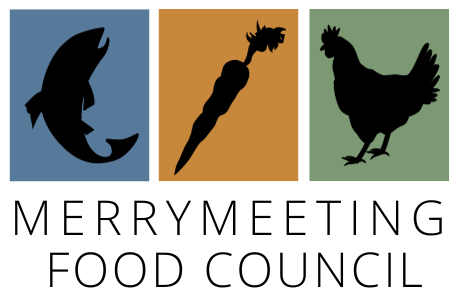Nationwide Resources
FARMLAND AVAILABILITY
United States Department of Agriculture’s National Agricultural Statistics Service released data from the 2017 Census of Agriculture in early 2019. The Census is conducted every five years, and provides national, state, and county-level data that informs many federal farm programs, policies, and funding decisions. Download the full Census report and see this summary from Maine Farmland Trust about the Census data for Maine. Additionally, see the American Farmland Trust’s 2018 Report about the state of our nation’s farmland: Farms Under Threat.
Financing Your Food System Business
National Young Farmers Coalition has resources available to help young farmers and ranchers find land. See this 2020 blog post here including link to the Finding Farmland Calculator.
In Maine, there are several options to financially support your food system business, in addition to traditional loans from banks, including: Farm Credit East, Slow Money Maine, CEI, BCDI (Bowdoinham businesses only) and more.
Connecting Farmers with Land
Maine Farmland Trust’s FarmLink tool helps connect landowners and farmland seekers. Create your profile, search through available farmland, or find farmland seekers!
New England Farmland Finder is similar to FarmLink, but includes farmland throughout New England.
Bowdoinham Community Development Initiative is creating a hyper local tool through their Farmland Inventory to connect farm land seekers with land owners.
Land For Good has extensive resources for farm land owners and farm seekers to help make good decisions and negotiate leases.
Land Stewardship Project has resources to support financial decisions for farmers.
An illustrated video on the challenges of the dominant food system, and alternatives for creating healthy people and a healthy planet. Commissioned by the University of Vermont.
FOOD POLICY NETWORK
Johns Hopkins Center for a Livable Future's Food Policy Networks Project has extensive resources for food systems work including a map showing Food Policy Councils nationwide and extensive research links.
2019 Food Policy Council Achievements
Leadership Learning Community
LLC is a national nonprofit organization transforming the way leadership development work is conceived, conducted and evaluated, primarily within the nonprofit sector. We focus on leveraging leadership as a means to create a more just and equitable society. We combine our expertise in identifying, evaluating and applying cutting-edge ideas and promising practices in the leadership development field, with access to our engaged national network of hundreds of experienced funders, consultants and leadership development programs, to drive the innovation and collaboration needed to make leadership more effective. We also offer the following consulting services to help programs and foundations optimize their leadership investment strategy: scans, evaluations and network development.
Click here for more information about LLC.
Webinar below on Network Structures - June Holley.
USDA Economic Research Service
Food security definitions:
Food secure households had access, at all times, to enough food for an active, healthy life for all household members: 87.7 percent (110.8 million) of U.S. households were food secure throughout 2016.
Food-insecure households are uncertain of having, or unable to acquire, at some time during the year, enough food to meet the needs of all their members because they had insufficient money or other resources for food: 12.3 percent (15.6 million) of U.S. households were food insecure at some time during 2016. Food-insecure households include those with low food security and very low food security.
7.4 percent (9.4 million) of U.S. households had low food security in 2016.
4.9 percent (6.1 million) of U.S. households had very low food security at some time during 2016.
Households with very low food security are food insecure to the extent that normal eating patterns of some household members were disrupted at times during the year, with self-reported food intake below levels considered adequate.
For more information and maps, click here.
READINGS
Food Security and Hunger
2017. Stand Together or Starve Alone: Unity and Chaos in the U.S. Food Movement. Mark Winne. (Website.)
2017. Big Hunger: The Unholy Alliance between Corporate America and Anti-Hunger Groups. Andrew Fisher. (Website. Discussion guide.)
Network Development
2017. Leading Culture and Systems Change: How to Develop Network Leadership
and Support Emerging Networks. Download here.2012. Leadership & Networks: New Ways of Developing Leadership in a Highly Connected World. Download here.
OTHER National Resources
Farm to Institution Policy and Advocacy tools.
Food Corps: Healthy food is an essential building block for a full life. But right now, we’ve got a generation of children that is overweight, vulnerable to diet-related disease, and more likely to suffer from a variety of health problems that will hold them back throughout their lifetimes. Our mission: Together with communities, FoodCorps serves to connect kids to healthy food in school.
Local Catch: LocalCatch.org is a community-of-practice that is made up of fisherman, organizers, researchers, and consumers from across North America that are committed to providing local, healthful, low-impact, and economy sustainable seafood via community supported fisheries (CSFs) and other direct marketing arrangements.
Slow Food USA: Slow Food USA gathers likely and unlikely allies to transform the way we produce, consume, and enjoy food.
USDA Natural Resources Conservation Service (NRCS): Maintains the Web Soil Survey which provides extensive mapping information about soils. Also maintains the Conservation Webinar Portal: The NRCS Science & Technology Training Library.

